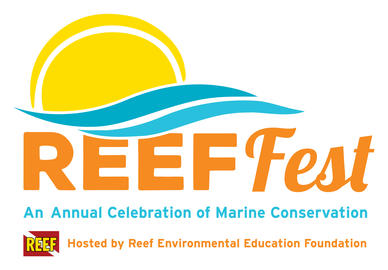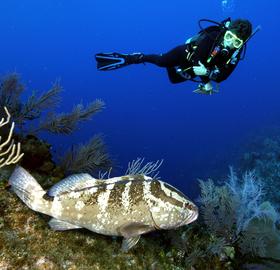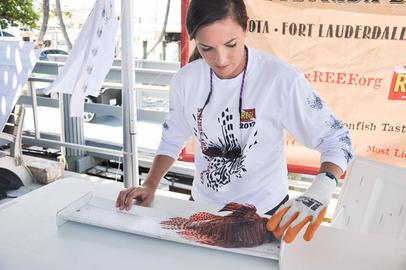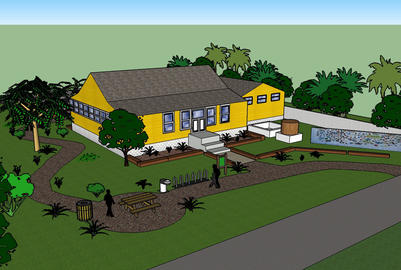REEF Headquarters in Key Largo and much of the surrounding community are beginning to return to normal following temporary closure due to Hurricane Irma in September. Because of the storm it was necessary for REEF Fest to be postponed from its original September dates. We are excited to announce that we have rescheduled the event for December 7-10, 2017! We appreciate your patience while we coordinated with event partners and sponsors to reschedule the event.
We are proud to share the latest publication to result from REEF's programs - the paper, titled "Hydroacoustics for the discovery and quantification of Nassau Grouper (Epinephelus striatus) spawning aggregations" was published in the scientific journal Coral Reefs earlier this year. The Grouper Moon Project is always looking for new and/or better ways of accurately estimating the number of spawning Nassau Grouper at the aggregation sites being monitored.
South Water Caye Marine Reserve, in southern Belize, is a unique mangrove/coral reef habitat and home to several endemic species including the Social Wrasse and the Maya Hamlet. The goal of this trip is to study the effects of stressors such as invasive lionfish and habitat loss on this remote area of the Mesoamerican barrier reef system, with a special focus on how these impacts are affecting species that are not found anywhere else in the Caribbean. Participants will work with local partners to conduct fish surveys as well as lionfish research and removals.
An annual celebration of marine conservation. Events include educational seminars, social gatherings, diving and eco-adventures alongside some of the most prestigious names in diving and marine conservation. All REEF Fest events are open to the public. Visit www.REEF.org/reeffest to register and for schedule details.
REEF fish survey data collected from Bonaire in 2015 were used to help evaluate the impact of terrestrial degradation on nearby coral reefs, specifically investigating the link between vegetation ground cover and tree biomass index to coral cover, fish communities and visibility. The authors found a positive relationship between ground cover and coral cover below 10 m depth, and a negative relationship between tree biomass index and coral cover below 10 m.
The Grouper Moon Project is always looking for new and/or better ways of accurately estimating the number of spawning Nassau Grouper at the aggregation sites being monitored. In 2014, we tested the use of a split-beam echosounder as a tool for surveying the abundance and size of fish at the aggregation site; the results of the study are detailed in this peer-reviewed paper. We found that the echosounder performs fairly well at providing an index of abundance, although the absolute accuracy of the method was not sufficient to replace other survey methods (e.g.
This summer, divers and snorkelers from around the country came together to combat the invasive lionfish, vying for over $14,000 in total cash prizes. The series included derby events throughout Florida including Sarasota, the Upper Keys, Fort Lauderdale, and Palm Beach County, as well as Lionfish Culinary Competitions in conjunction with the Sarasota and Palm Beach County derbies.
This summer, we set an ambitious goal of raising $150,000. Our members donated generously to support REEF's expansion project and because of you, we were able to reach our goal! Thank you to our members who donated this summer, and a special thank you to Monroe County for matching these gifts.
REEF Fest 2017 is just around the corner - September 28 - October 1. There are so many great activities planned during the four day event. A highlight is always our Saturday night banquet, For the Love of the Sea. Have you purchased your ticket yet? Seating is limited and over half of our available tickets have sold. Visit www.REEF.org/REEFfest/dinnerticket to get your ticket.






